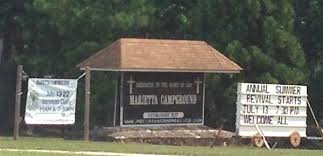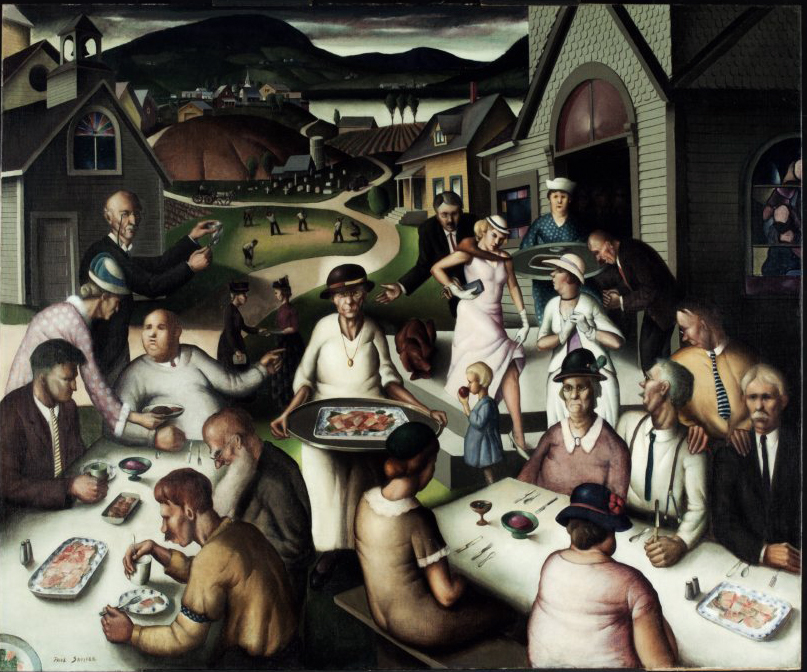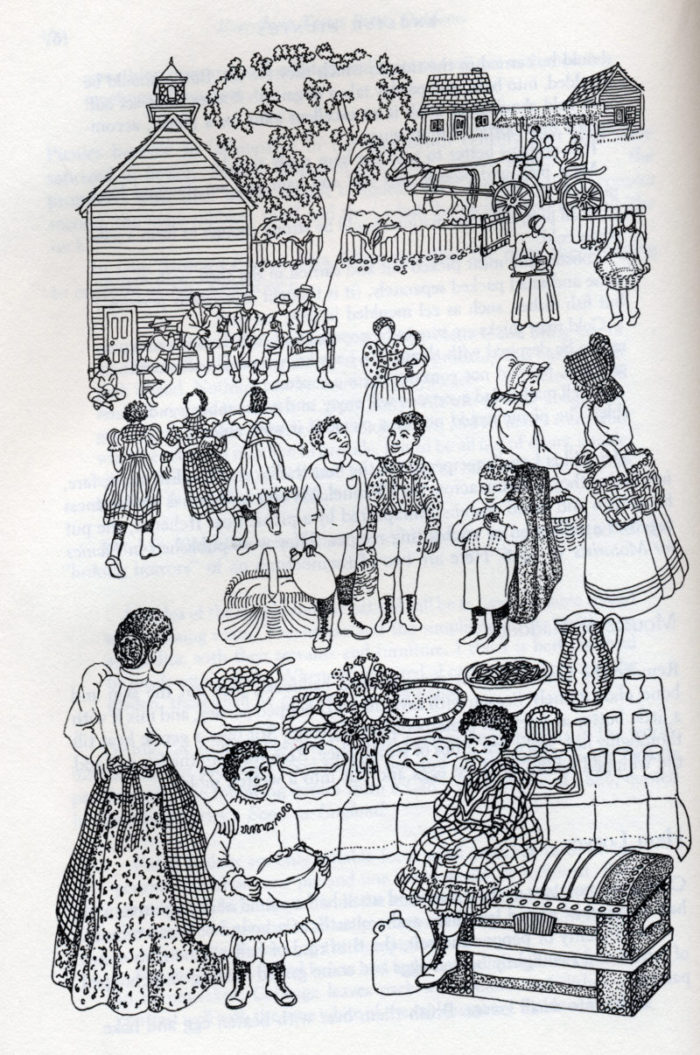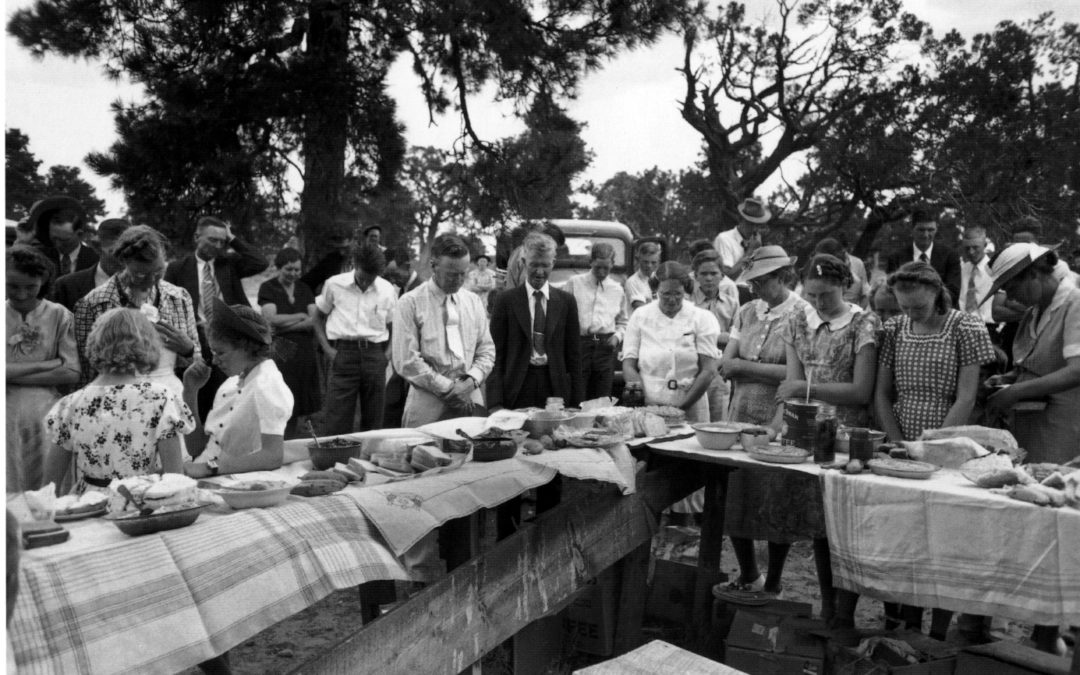Dinner on the grounds (always with an “s”) is a Methodist revival meeting picnic. There are many geographic variations throughout the United States, but Southerners seem to hold sway, scheduling the meeting for “lay-by time,” sometime between planting and harvesting. Among agrarian communities, the revival is held in August before harvesting begins in earnest.
Sometimes these are called Camp Meetings and are associated with the advent of Methodism in the U.S. in the first decade of the Nineteenth Century. Camp meetings, however, may be held at any time in any season. Besides spiritual regeneration, food is an essential element of the arrangements. The Marietta Campground [Georgia] has held such August rival meetings since 1837. 
William Clary’s memories of a small town in Brunswick County, Virginia, date to the 1920-30s. He writes that dinner on the grounds at Wesley’s Chapel followed a regular pattern—the sermon in the morning, followed by dinner on the grounds, followed by another sermon. Tables were set outside in the shade of trees, and each family brought its own picnic. “Our table was famous for at least three things,” Clary remembered, “Aunt Sally’s biscuits, my mother’s cucumber pickles, and coconut pie. The menu was pretty consistent: fried chicken, bked ham, and biscuits. There was corn pudding. If there was anything green, I don’t know what it was; I don’t remember cabbage. There was always cocoanut cake as well as pie. The only drink was iced tea, sweet and without lemon. Southerners have never eaten watermelon as dessert; it was chilling in the icebox and was split when we got home from church.”

Paul Sample. Church Supper (1933),
Edna Lewis’ A Taste of Country Cooking (1976) includes a memory of an African American Revival Sunday Dinner in her hometown Freetown, Virginia, in the 1930s. Lewis calls it “Second Sunday,” She remembers that it “always seemed to have been a perfect day, with everyone looking their best, eating and chatting.” Women did the cooking while the men attended church. Then the men returned home and gathered the family and packed the food so that it would arrive at the church “piping hot.” (See PicnicWit.com for more of Edna Lewis’ memories.)

Alta Ann Parkins. Revival Sunday Dinner for Edna Lewis’s A Taste of Country Cooking, In Claudia Roden. Everything Tastes Better Outdoors (1984)
See Albert E. Brumley’s All-Day Singin’ and Dinner on the Ground: Traditional Songs & Recipes (Camdenton, MO,1972). Inexplicably, Brumley omits the “s” in grounds. Pie Town, New Mexico, 1940 loc.gov
Featured Image: Russell Lee. <em>Pie Town, New Mexico, 1940</em> loc.gov folks are eating dinner at the all-day community sing.

